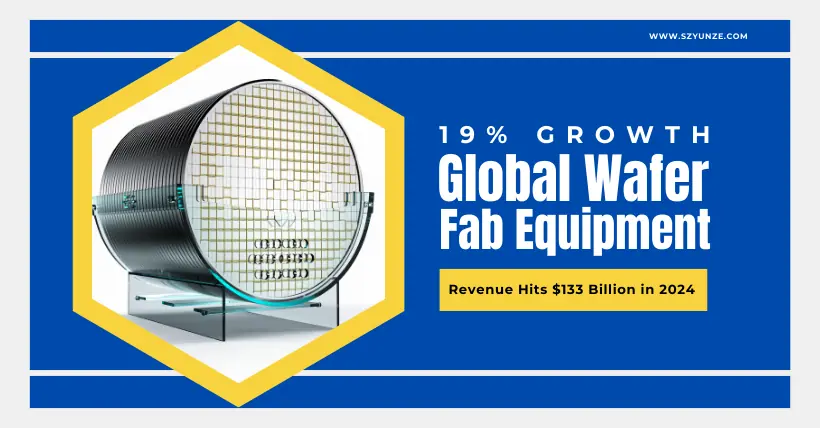
Recently, a report from the market research firm Yole Group indicates that the semiconductor industry is on a strong upward trajectory, with global wafer fab equipment (WFE) revenue expected to reach $133 billion by 2024, representing a year-on-year growth of 19%. Of this, 83% will come from equipment shipments and 17% from services and support. However, growth will vary significantly across different equipment segments.
Yole Group analysts attribute the growth in the WFE market for 2024 primarily to increased investments in DRAM/HBM and processors geared towards generative AI, while capital expenditure for NAND Flash remains weak, and traditional logic and specialty markets face potential risks. In this uncertain environment, WFE suppliers are diversifying their application portfolios to maintain or enhance their revenue levels in response to uneven capital spending.
Looking at a longer timeframe, Yole Group projects that global total WFE revenue will reach $165 billion by 2029. Of this, WFE shipments are expected to grow to $139 billion, with a compound annual growth rate (CAGR) of +4.7%, clearly driven by changes in equipment architecture for memory and logic chips. Meanwhile, the services and support segment will generate $27 billion in revenue, with a CAGR of +3.3%. This growth is fueled by an increase in installed base utilization and rising mechanical complexity.
Notably, in terms of regional revenue sources, mainland China will become the most significant destination for WFE equipment shipments in 2023 and 2024, accounting for one-third of the total WFE market revenue. In terms of revenue from leading suppliers, companies based in the United States traditionally lead overall revenue. Currently, the WFE market leaders include ASML, Applied Materials (AMAT), Lam Research, Tokyo Electron Limited (TEL), and KLA.
Taguhi Yeghoyan from Yole Group explains, “Applied Materials ranked second in 2023, achieving sales growth through application portfolio differentiation. Revenue for other leading companies declined in 2023 due to falling NAND demand but is expected to grow in 2024. Finally, we anticipate that the long-tail revenue for smaller suppliers will shrink.”
Source: Yole Group
Related:

Disclaimer:
- This channel does not make any representations or warranties regarding the availability, accuracy, timeliness, effectiveness, or completeness of any information posted. It hereby disclaims any liability or consequences arising from the use of the information.
- This channel is non-commercial and non-profit. The re-posted content does not signify endorsement of its views or responsibility for its authenticity. It does not intend to constitute any other guidance. This channel is not liable for any inaccuracies or errors in the re-posted or published information, directly or indirectly.
- Some data, materials, text, images, etc., used in this channel are sourced from the internet, and all reposts are duly credited to their sources. If you discover any work that infringes on your intellectual property rights or personal legal interests, please contact us, and we will promptly modify or remove it.


